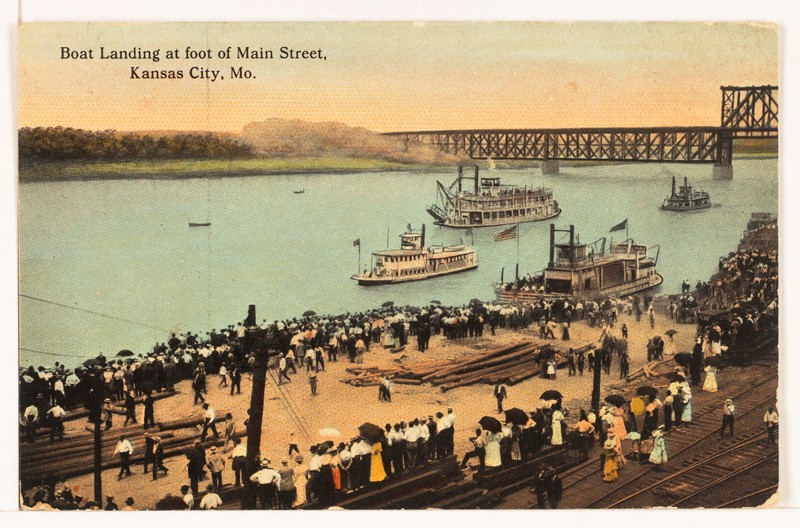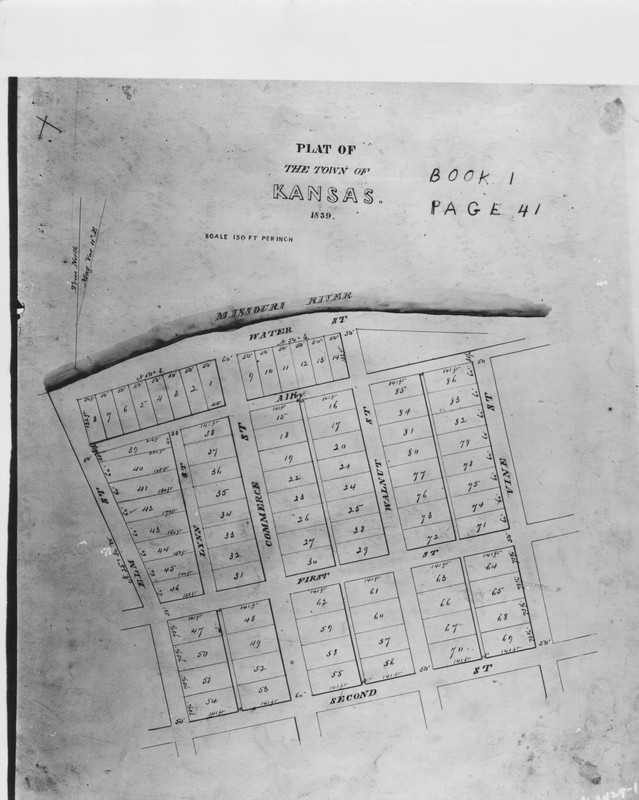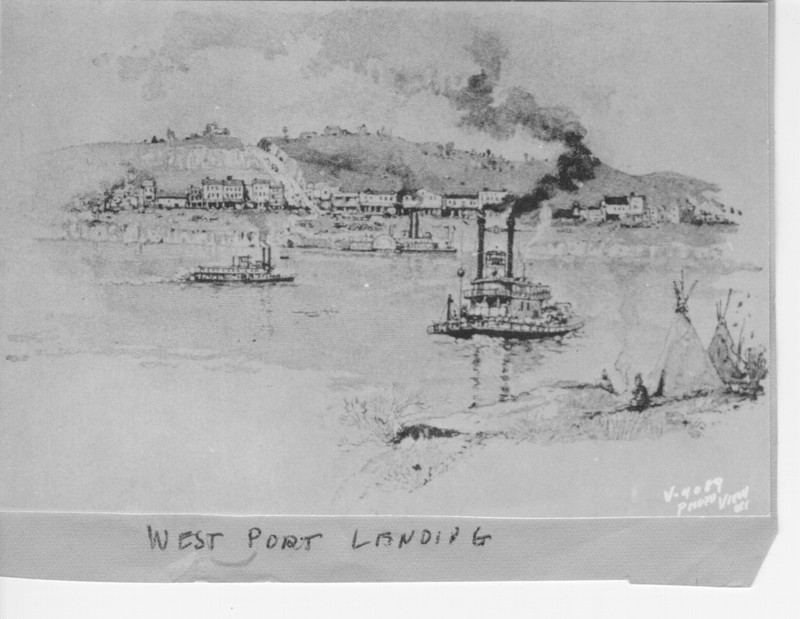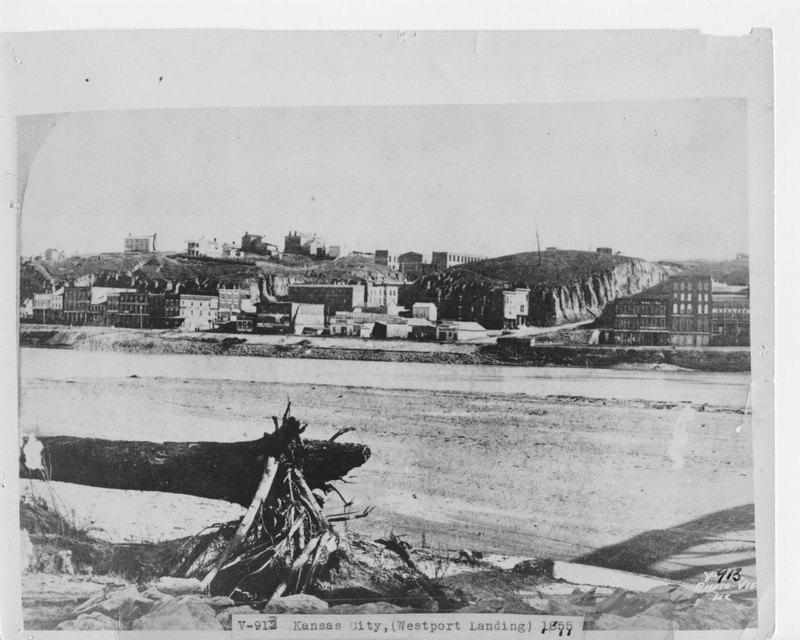Town of Kansas Bridge
Introduction
Text-to-speech Audio
The Town of Kansas bridge connects the River Market to the Berkley Riverfront Park and the Riverfront Heritage Trail. From the bridge, you can see relics and remainders of the initial settlement that would become Kansas City as well as a sprawling view of the Missouri River. Along the bridge and observation deck are a handful of markers indicating specific sites and providing context. If you stand long enough at the observation deck, you are likely to see pedestrians, trains, river barges, planes, and automobiles; a reminder of the intersecting routes that allowed Kansas City to grow.
Images
Missouri River Landing at the foot of Main Street

Platting of the land included in the Town of Kansas

Photograph of a drawing, looking south from north side of Missouri River at Westport Landing.

View of Westport Landing, Kansas City's early riverfront, looking south from north side of Missouri River.

Backstory and Context
Text-to-speech Audio
The Town of Kansas Bridge was included as part of the Riverfront Heritage Trail project. Many public and private stakeholders contributed funding to complete the construction, including: Kansas City, Missouri; The Unified Government of Wyandotte County and Kansas City; and the Port Authority of Kansas City. From the beginning of the bridge to the Missouri River Viewing Deck, there are six historical markers pointing out elements of the original settlement which resided at this location: Town of Kansas, Waterfront Town to Metropolis, From Steamboat Landing to City, Hannibal Bridge, Gilliss House Hotel, and Building Through the Bluffs.
The frontier village of Westport was established by John Calvin McCoy from Kentucky in 1833 with J.P. Hickman and J.H. Flournoy to supply furs to local native populations and outfit missionaries and settlers westbound on the Santa Fe and Oregon Trail. McCoy, frustrated with his three-day journey to the port of Independence to resupply his wares, established a closer landing further west of Independance at a discovered natural-rock ledge on the south bank of the Missouri River. This landing, almost directly north from Westport, reduced the three-day stocking trip to one that could be completed in a single day. He called it Westport Landing.
The country's westward expansion, fueled by the California Gold Rush and the Oregon and Santa Fe Trails naturally established a growing settlement on the spot McCoy had picked. In 1838, McCoy and 13 others created a town company to purchase the land from the government. They called it the Town of Kansas, named after the local Kansa Tribe of Native Americans who would also inspire the names of the neighboring state and Missouri-river tributary.
Jackson County was founded in 1827, and the County Court of Jackson County chartered the town of Kansas in 1850. Then in 1853 it was again chartered as the City of Kansas, and in 1889, as Kansas City.
